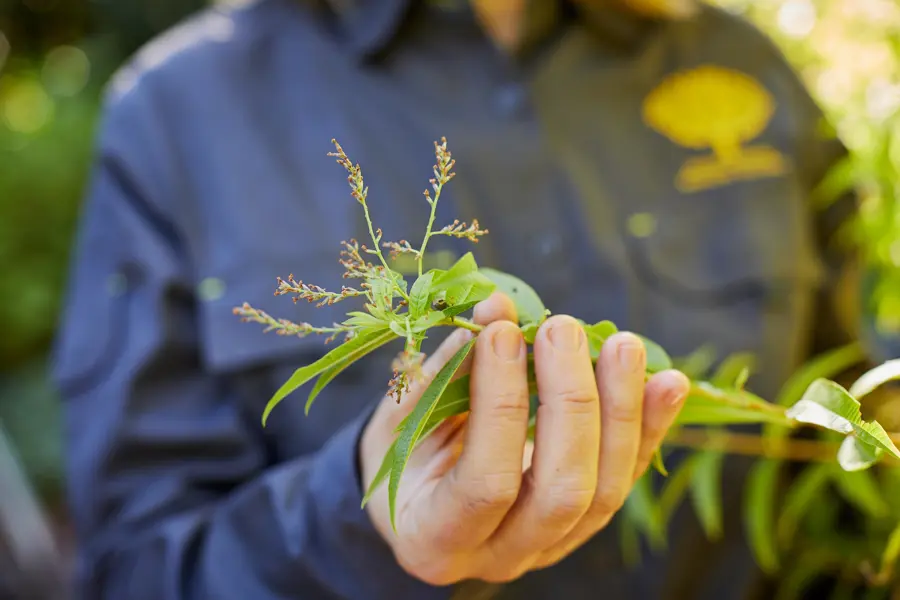
Discover the Herb and Medicinal Collection.
Delight your senses in this secluded garden – inhale deeply and touch gently.
From tiny, short-lived annuals to grand, century-old trees, the Herb and Medicinal Collection includes a medley of plants from around the world. Their uses – medicinal, culinary, aromatic, and spiritual – are as diverse as their form and origin.
For peak fragrance, visit late spring to early autumn. Warning! Some plants in this collection are toxic or irritating. Please do not eat, and touch with caution if you are sensitive. Always consult a professional therapist when using plant medicines.

Listen to Sonic Snippets: from the Sonica Botanica archive
[Intro] Sonic Snippets: from the Sonica Botanica archive
[Renee] My name is Renee Wierzbicki I’m a horticulturalist and I curate the Herb and Medicinal collection.
The Western tradition of botanic gardens has its roots in the study of medicinal plants, back to the medieval universities in Europe. People studying how to treat people with medicine would need to learn those plants for what to prescribe.
Most medicines were plants until the 20th Century. So they needed gardens where the students could study and they'd plant these beautiful medicinal gardens, and then some of those people became more interested in the plants than the medicine, and that's where the science of botany evolved, through a collection like this.
All cultures used plants as medicines and as foods. Some of those cultures will have more formal collections of those plants - the classic witches garden or the medicine man's garden - but then some will just harvest and forage as they are in nature., because the land will be the big garden for them.
So we all eat plants in one way, shape or form. We use plants for clothing, for fibre, for furniture, building materials, paper...plants really connect us all.
[Outro] Listen to full episodes of Sonica Botanica at rbg.vic.gov.au

